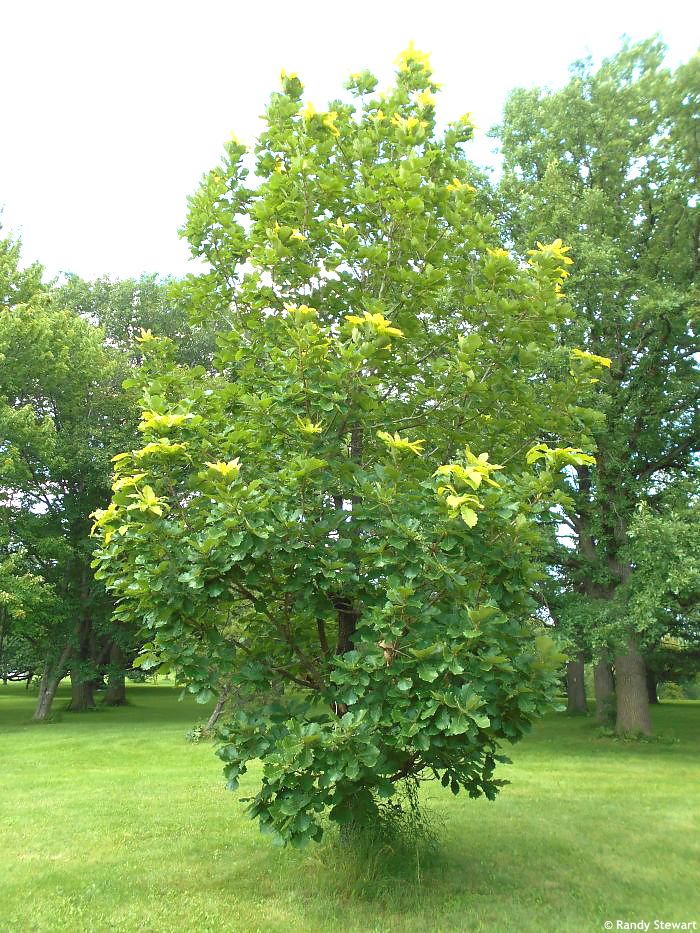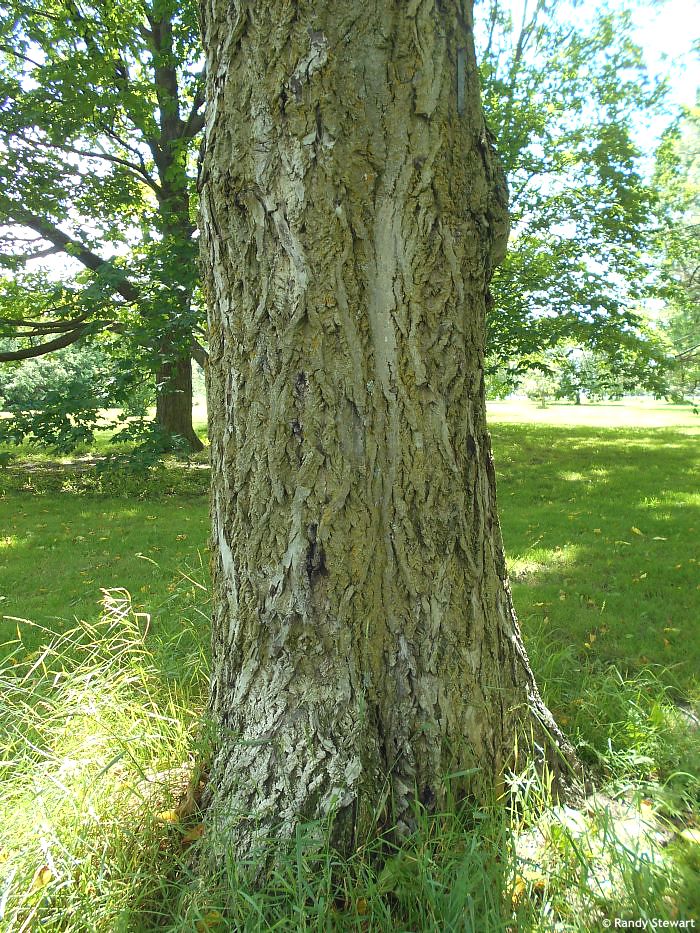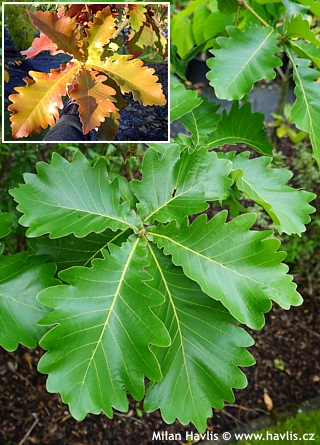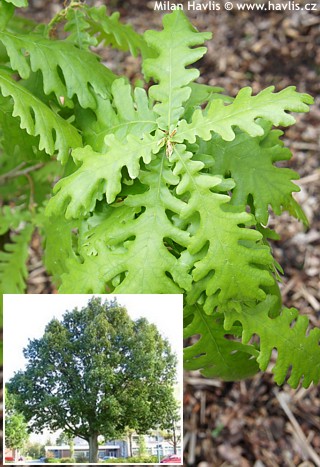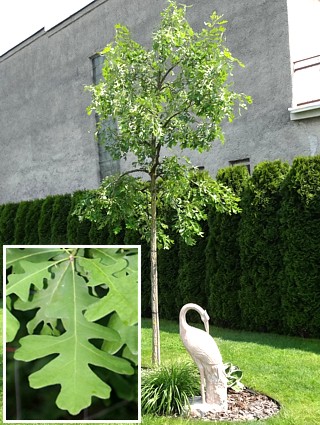Quercus dentata Daimyo oak, Japanese emperor oak
size/type
medium-sized tree,medium-sized tree
usual height
10-15m
usual width
6-8m
leaves
deciduous broadleaf
colour of leaves
location
full sun
soil type
any (acidic to alkaline)
soil moisture requirements
evenly moist (dislikes drought)
USDA zone (lowest)
5b (down to -27°C)
winter protection
for zone 5+6

for zone 7

categorized
Quercus
Oaks are common trees of our natural woodlands. They border our ponds, occur naturally in our mixed forests, and make magnificent specimen trees in our parks and arboretums where less common species or rare varieties can be seen.Description of the plant:
Daimyo oak, or also called Japanese emperor oak produces possibly the largest foliage of all species. Its deciduous leaves are anything from 20-40 cm long and half as wide, medium green in summer and amber orange to pale brown in autumn and fall very late – often in spring as new leaves emerge. They are renowned for heavier texture and attractive coarse margins similar to Hungarian oak. This oak grows faster than most of our European oaks, reaching about 10-15m tall and 6-8m wide in maturity. It is used in large to mid-sized gardens where it will make an exceptional specimen. Young plants make upright branches forming a narrowly oval canopy that becomes wider and stout with age. Solitary, almost spherical, large acorns are produced on older plants. The bark is heavily fissured, light brown to grey.
It will grow in any average, well-drained soil, pH value is not important. Fertilizing is not recommended. Newly planted trees need to be staked for 2-3 years to establish. Fully hardy to min. -27°C (USDA zone 5b), perhaps a little more. Roots of most oaks tend to heave paving – make sure to leave a distance of at least 3m from its trunk.
Last update 14-02-2020
QUICK PRICE OVERVIEW
CURRENTLY SOLD OUT
WANT TO TRY A SIMILAR PLANT?













